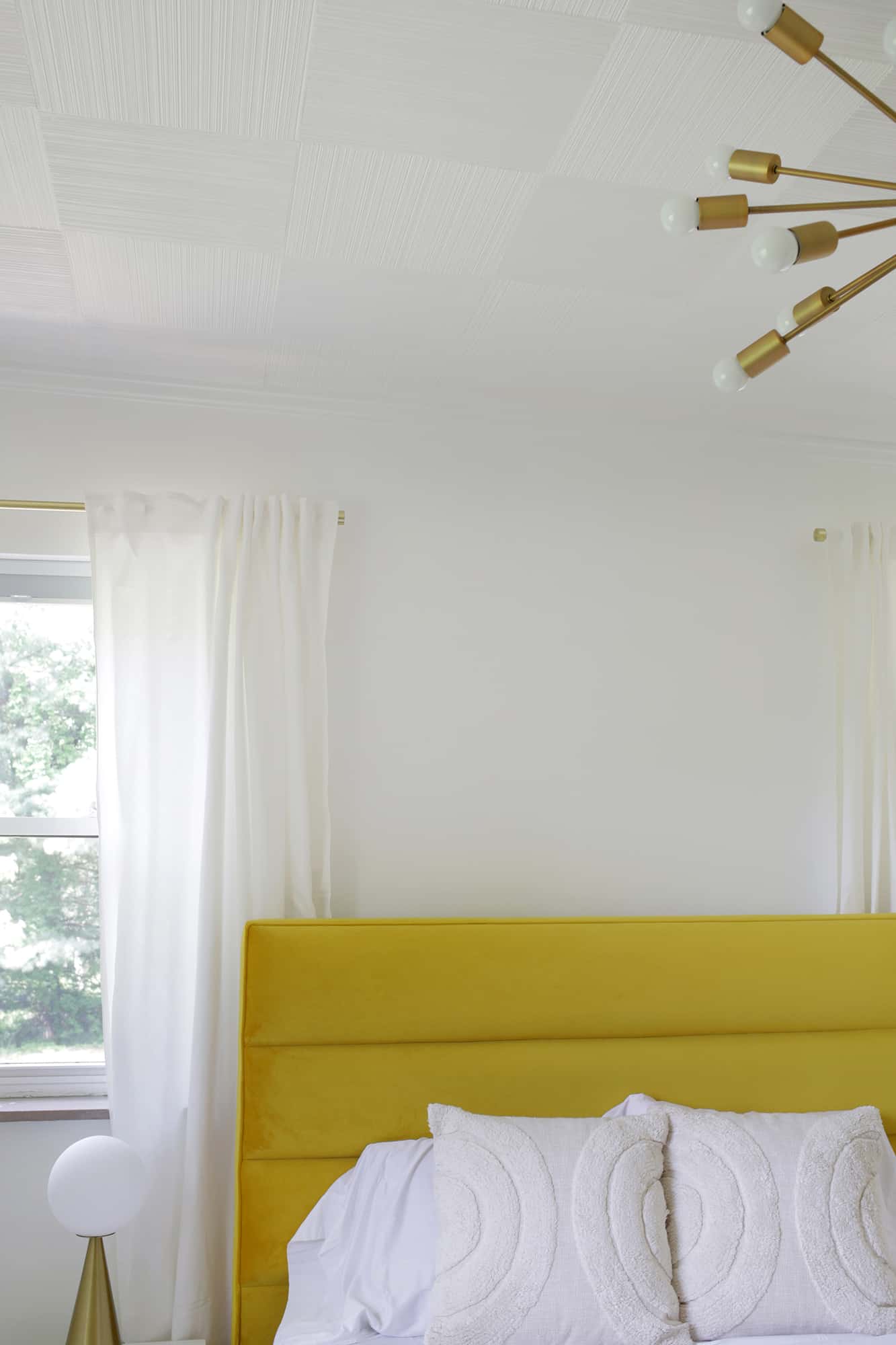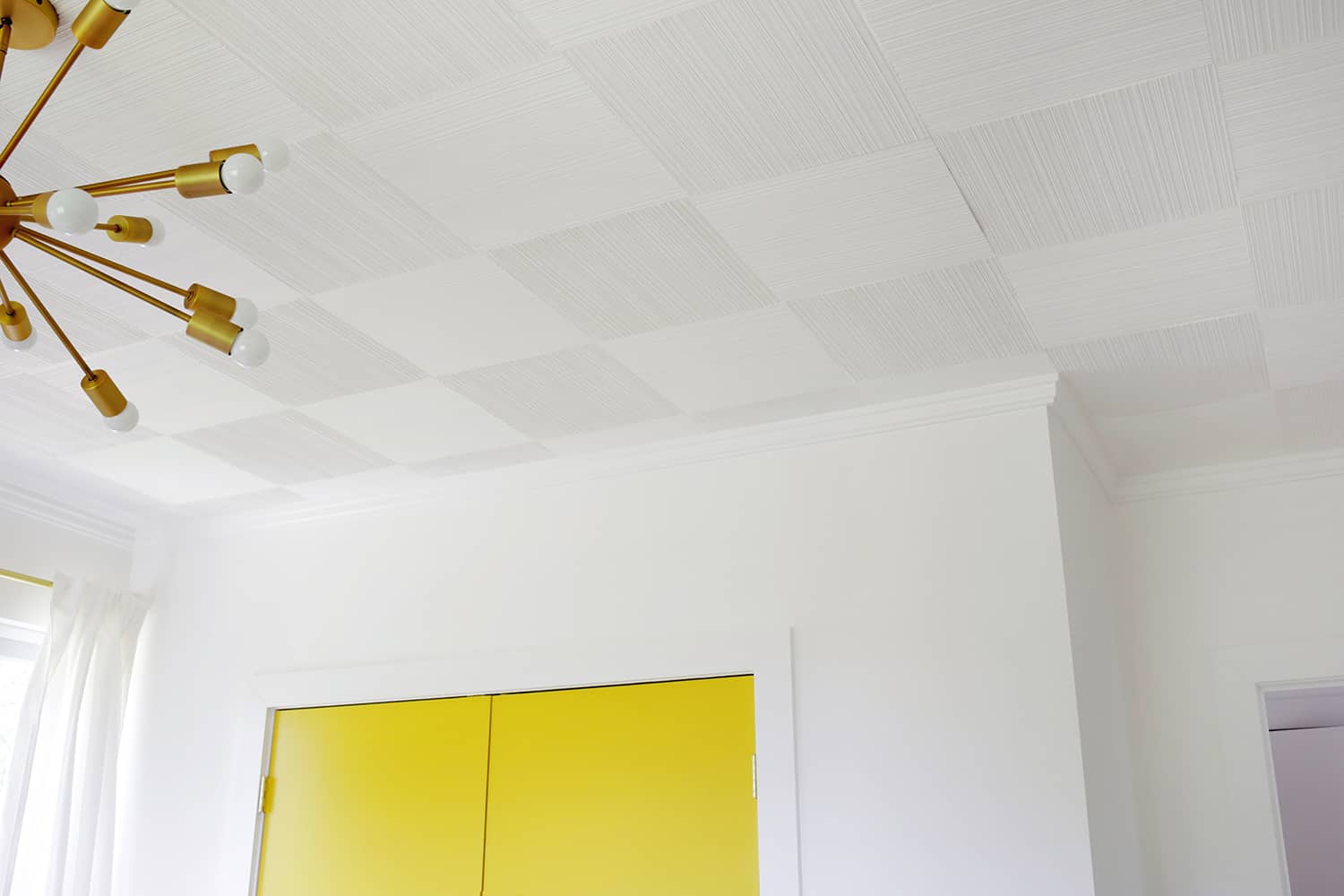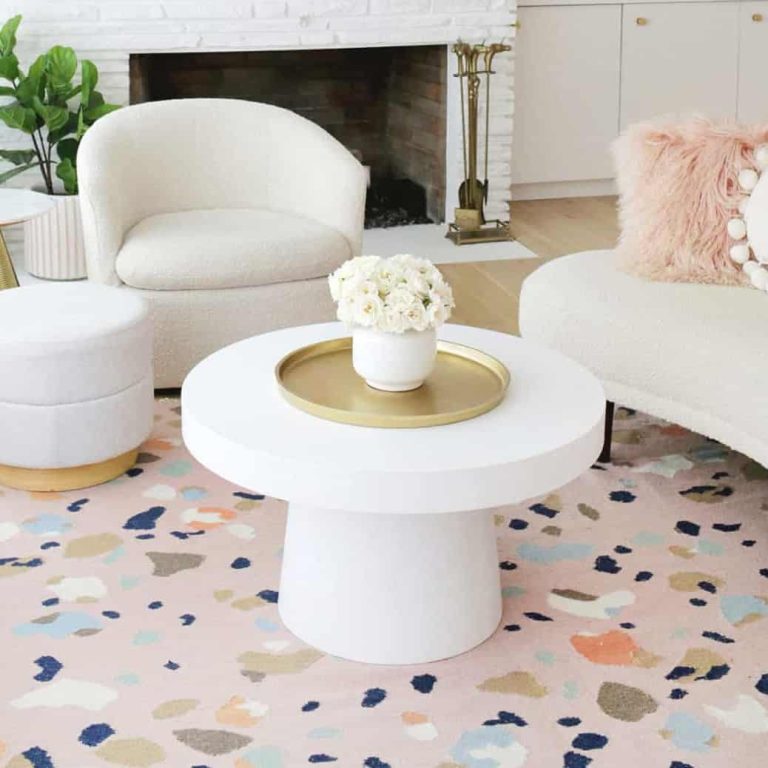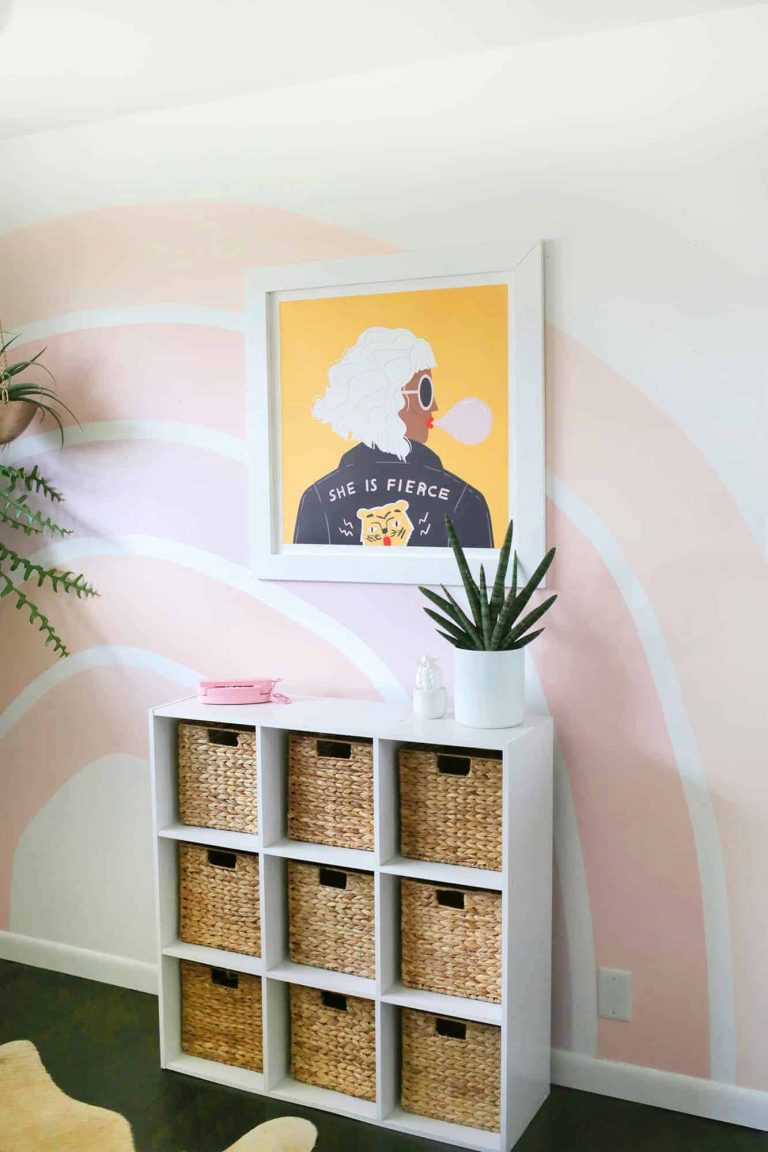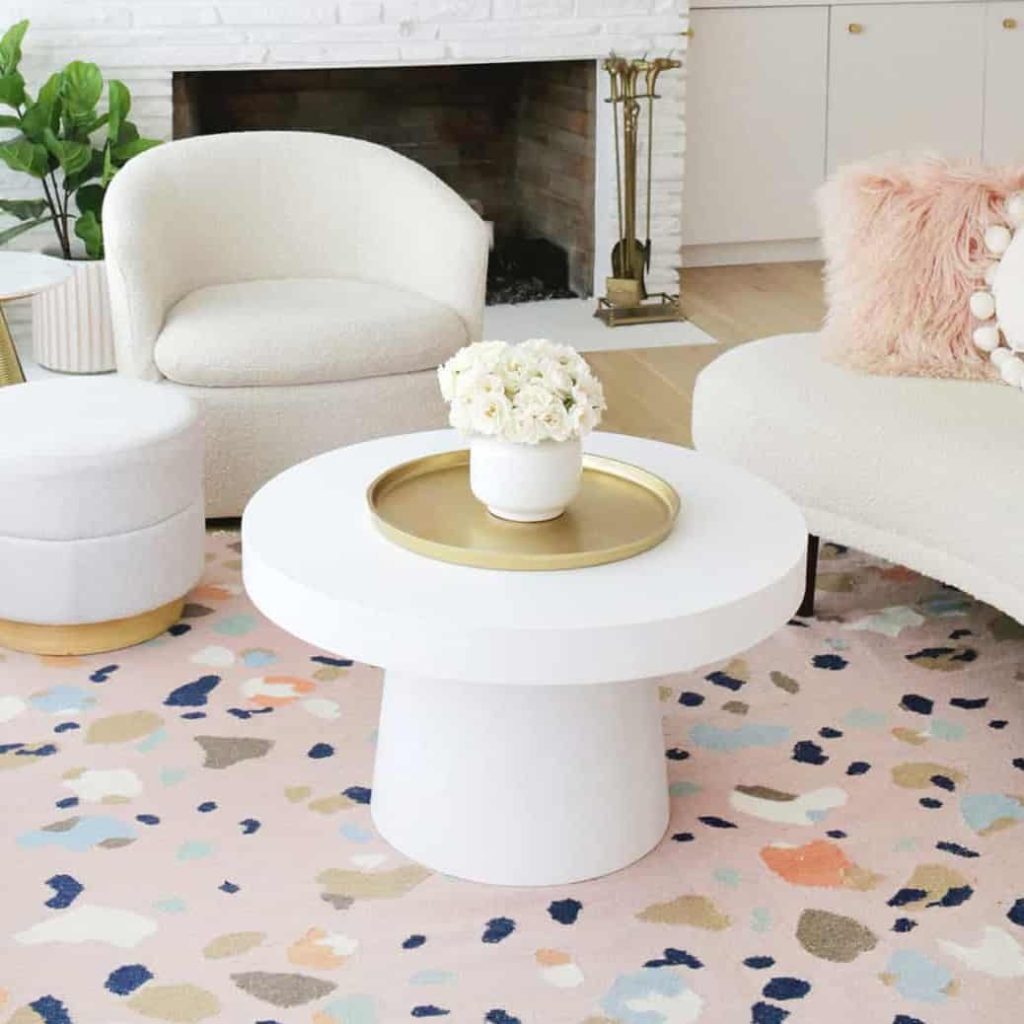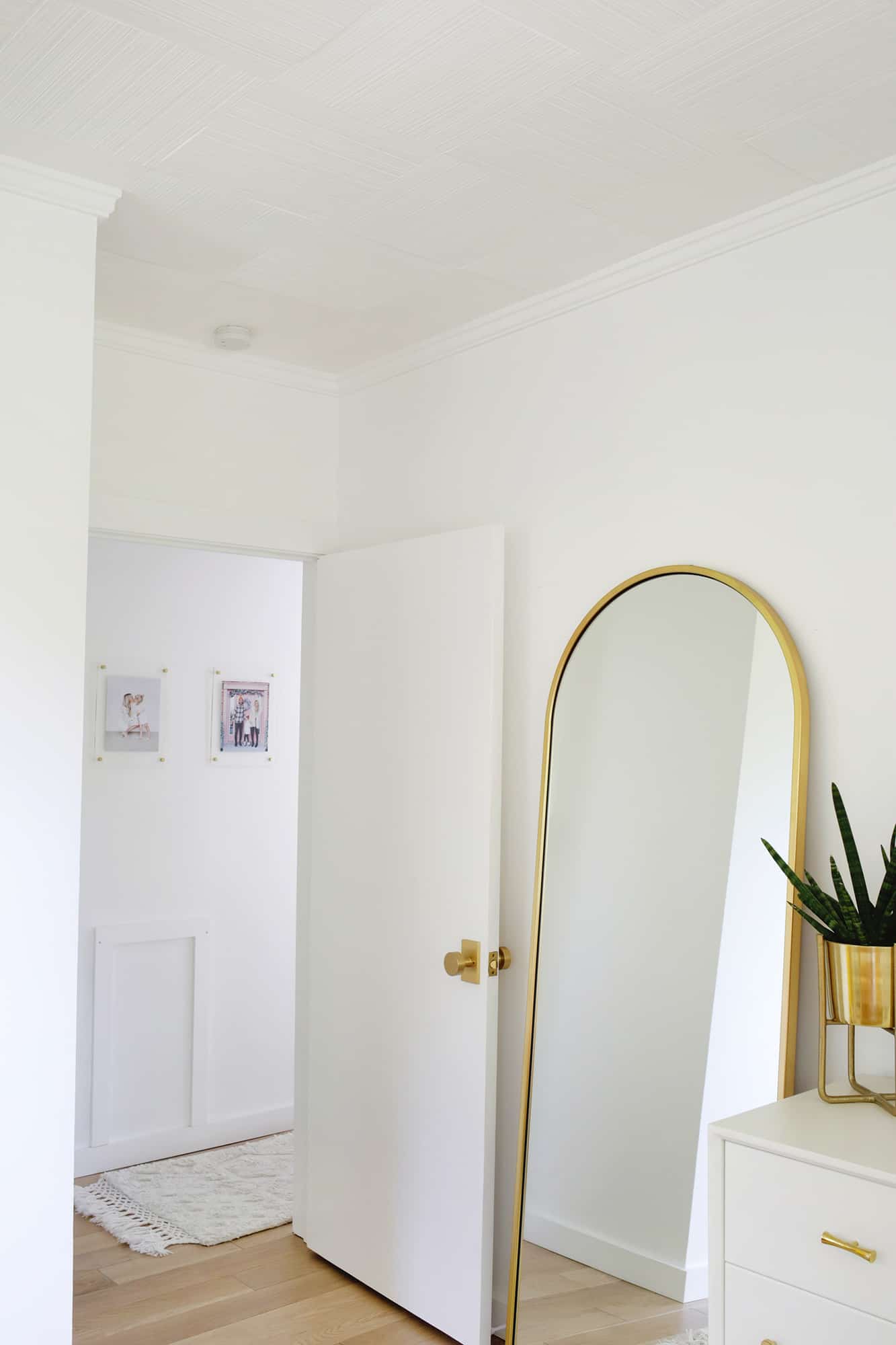 One of the things I didn’t know I’d be doing in our new house (among many many things) was installing crown molding.
One of the things I didn’t know I’d be doing in our new house (among many many things) was installing crown molding.
We have a unique ceiling situation in some of our rooms with some vintage Weldtex ceiling panels, so crown molding is a must in some rooms, as you need to hide a pretty large gap between the wall and the panels to get that seamless effect between the two (and it also hides some wall damage in the fragile plaster at the top as well).
I’ve done some trim work with baseboards, and once I started getting some quotes for installing crown molding in our bedroom, I thought, “I bet I can do that too!” Overall, it turned out really well, so I’ll share with you some of my tips in the process along the way …

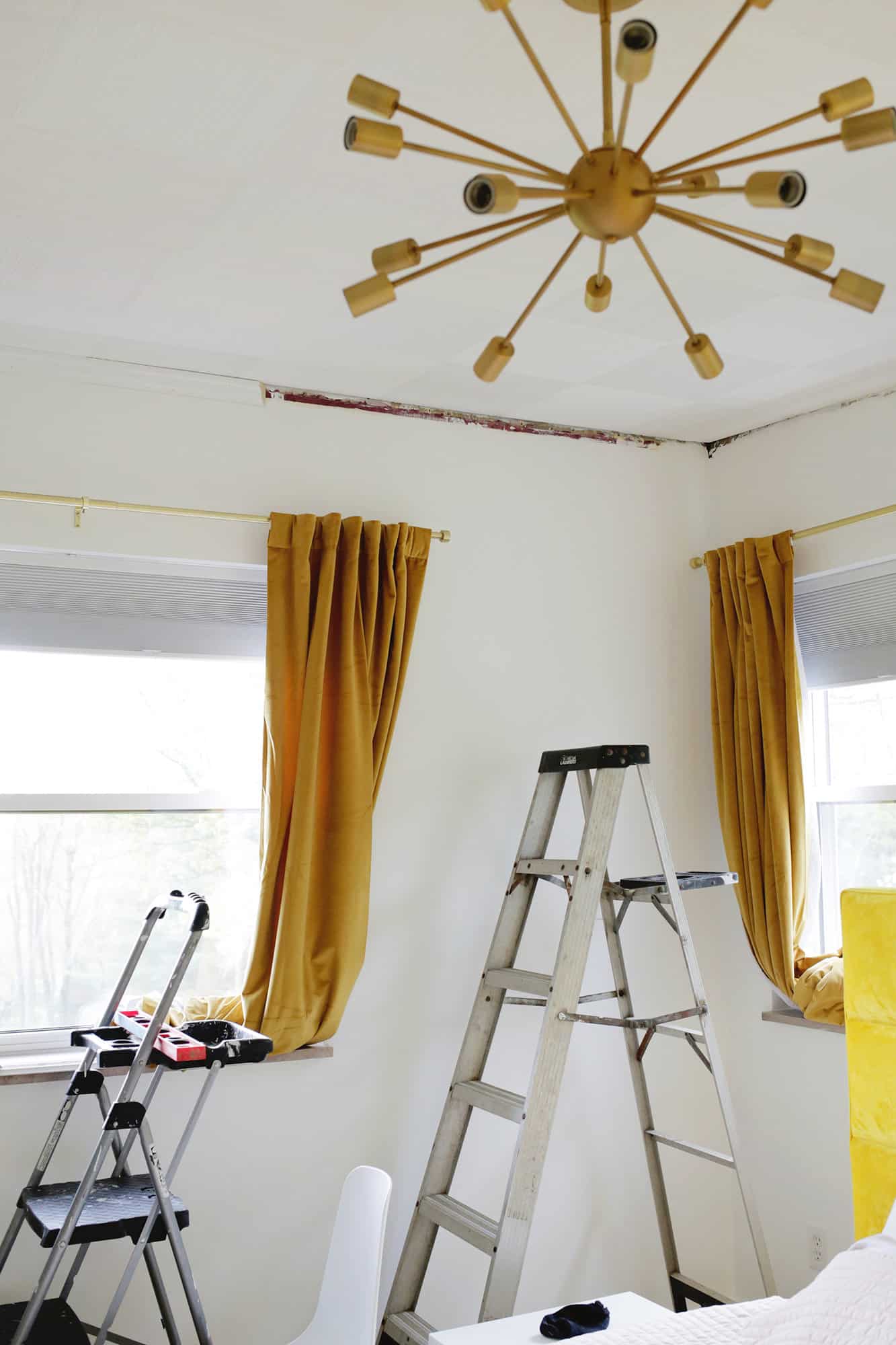
We also had to completely rebuild and drywall over a wall so that whole area would need new molding. So we decided to just take it all down and start fresh with something new!
I used this crown for our trim and I like that it was large enough to cover the gaps and damage we wanted to hide, but small and simple enough that it doesn’t look too “fancy” like some elaborate crown molding can.
It also has a right angle where it meets the wall so you don’t have to cut it upside down like you do for some molding, so that makes it a little more simple too.
The main things when dealing with crown molding are cutting corner areas, attaching the trim, adding pieces together, and filling/calking the trim, so I’ll go over each one and give our tips for that area.
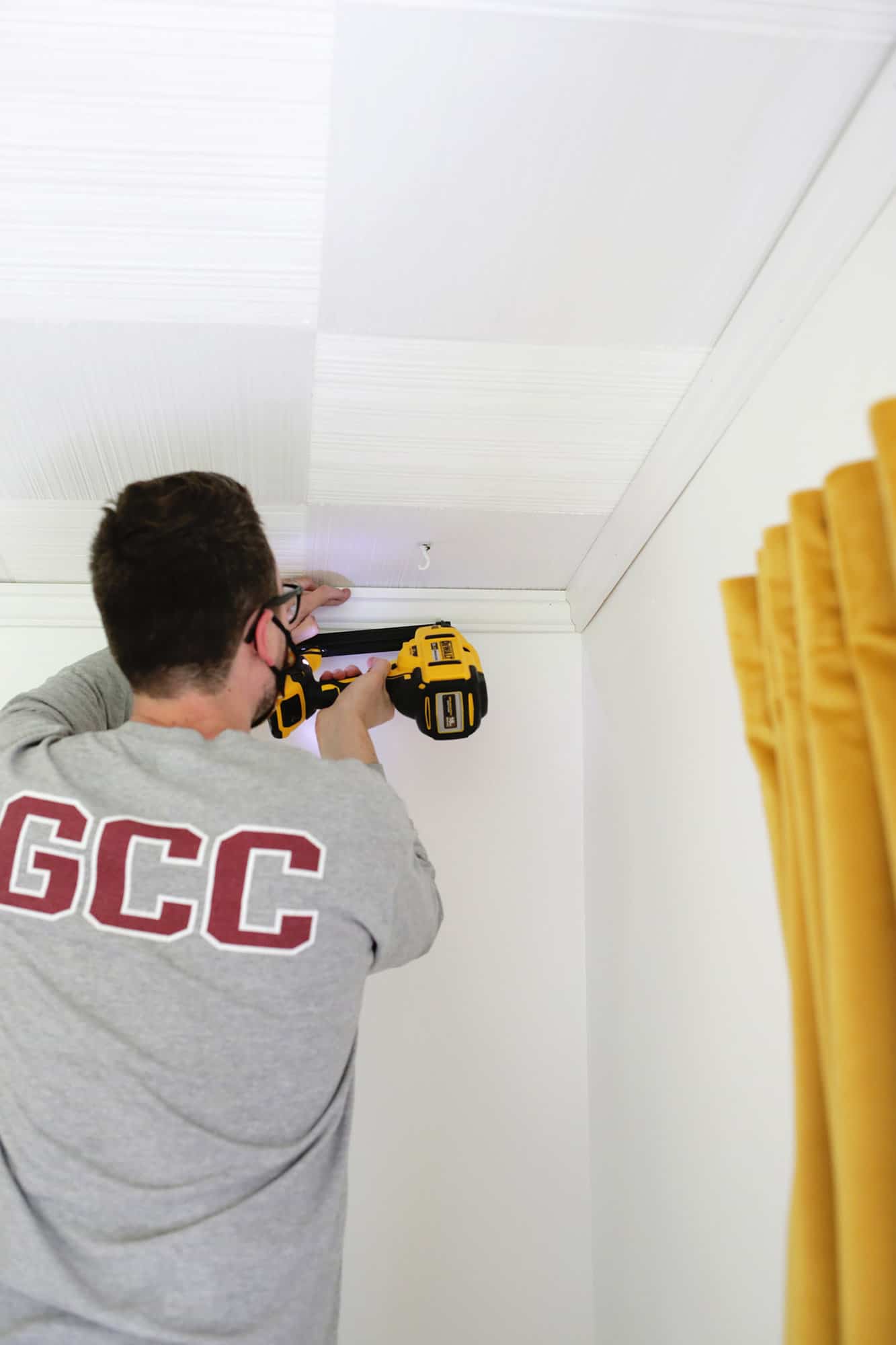
It’s not uncommon though for an angle to not be a perfect 90° (especially in older houses where nothing is square like our home), so I suggest using some trim as your scrap tester pieces where you can cut two mirroring 45° angles for the corner, hold them up to see if they fit, and then slowly cut a bigger or smaller angle as needed on each one until they fit (cut the same angle on both though so they match).
Once you have the “magic number” for your angles on that corner, then cut your real pieces with the angle you know will be perfect for that corner. Repeat for each corner.
You are basically doing the same thing for the outer corners as well (if you have those in a room like I do between my closet and bedroom door) with cutting test pieces starting at 45° and then adjusting from there until you have the right number for your actual boards.
*A note on cutting: I got a molding option that has wood all the way behind the trim face and comes to a right angle where the wall and ceiling meet, but if you have a kind like this that is “hollow” at the back of the molding, you’ll want to follow the advice in this video for how to cut the trim upside down (it’s a little over 1:00 into the video) instead.
They also show you a fancy way to fit corners together at the 5:30 mark which looks fascinating although we did the “regular” way and it turned out just fine 🙂
Attaching the trim: While I guess it is possible to attach trim with a good ol’ hammer and nail set (you’d want to do small head nails that are driven all the way in past the trim face with a nail set), renting/buying/borrowing a nail gun is really the way to go for this.
I love this battery powered one since you don’t have to mess with a tank (it’s so much easier!!), but you can get a nail gun and a tank as well for a little less.
Once you have your pieces cut and held up to the wall in place, use your nail gun to attach the wood to the ceiling and wall. You’ll want to alternate by angling some brad nails up into the ceiling and some straight into the wall.
Make sure your nails are going in past the face of the trim so you can fill the holes and make them disappear later in the next step. If your board is long enough to go from one corner to another, make sure both corners are measured and cut before attaching.
If your board doesn’t reach all the way to the next corner, then you’ll have to add two pieces together like I show you in the next step.
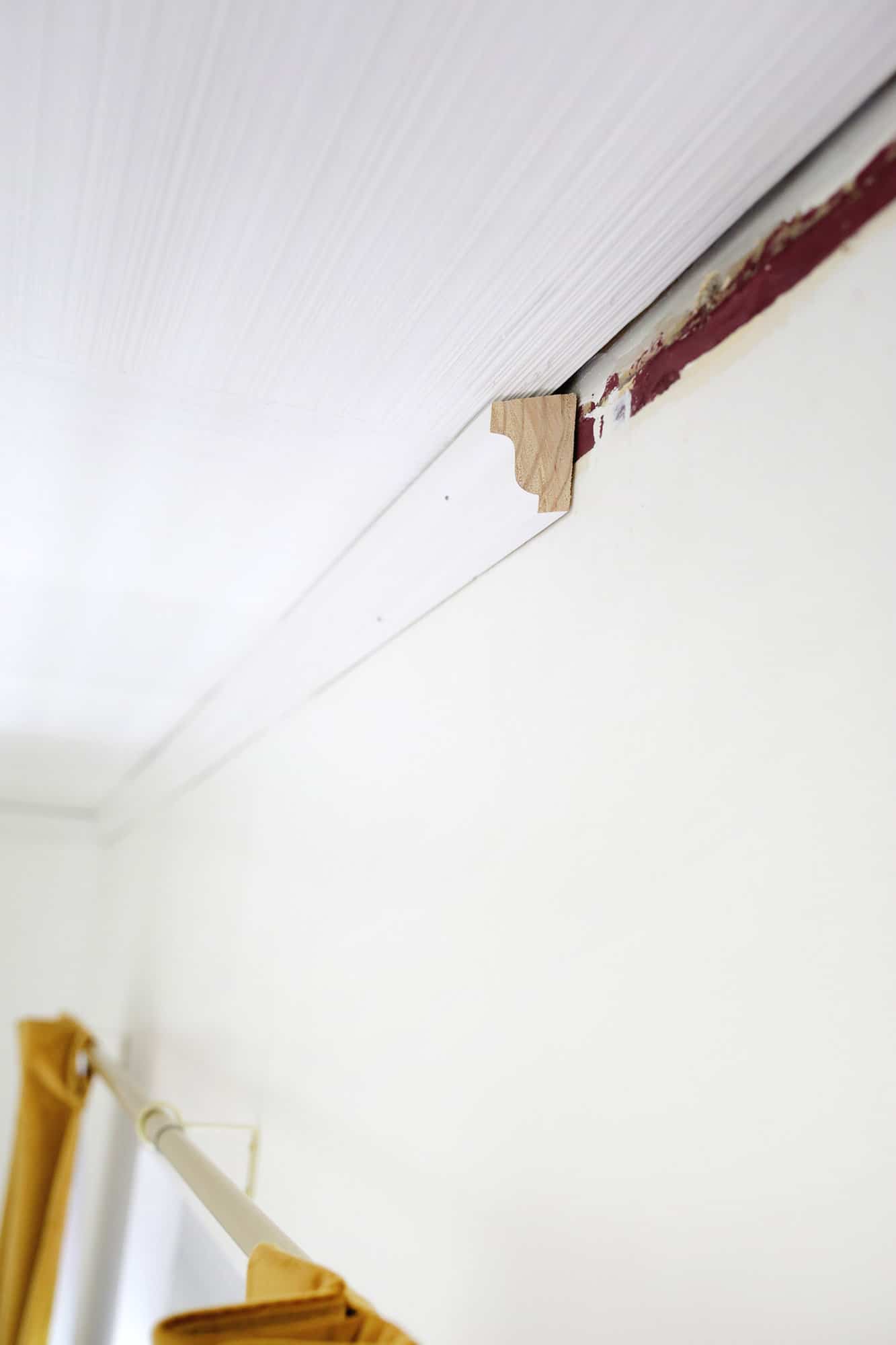
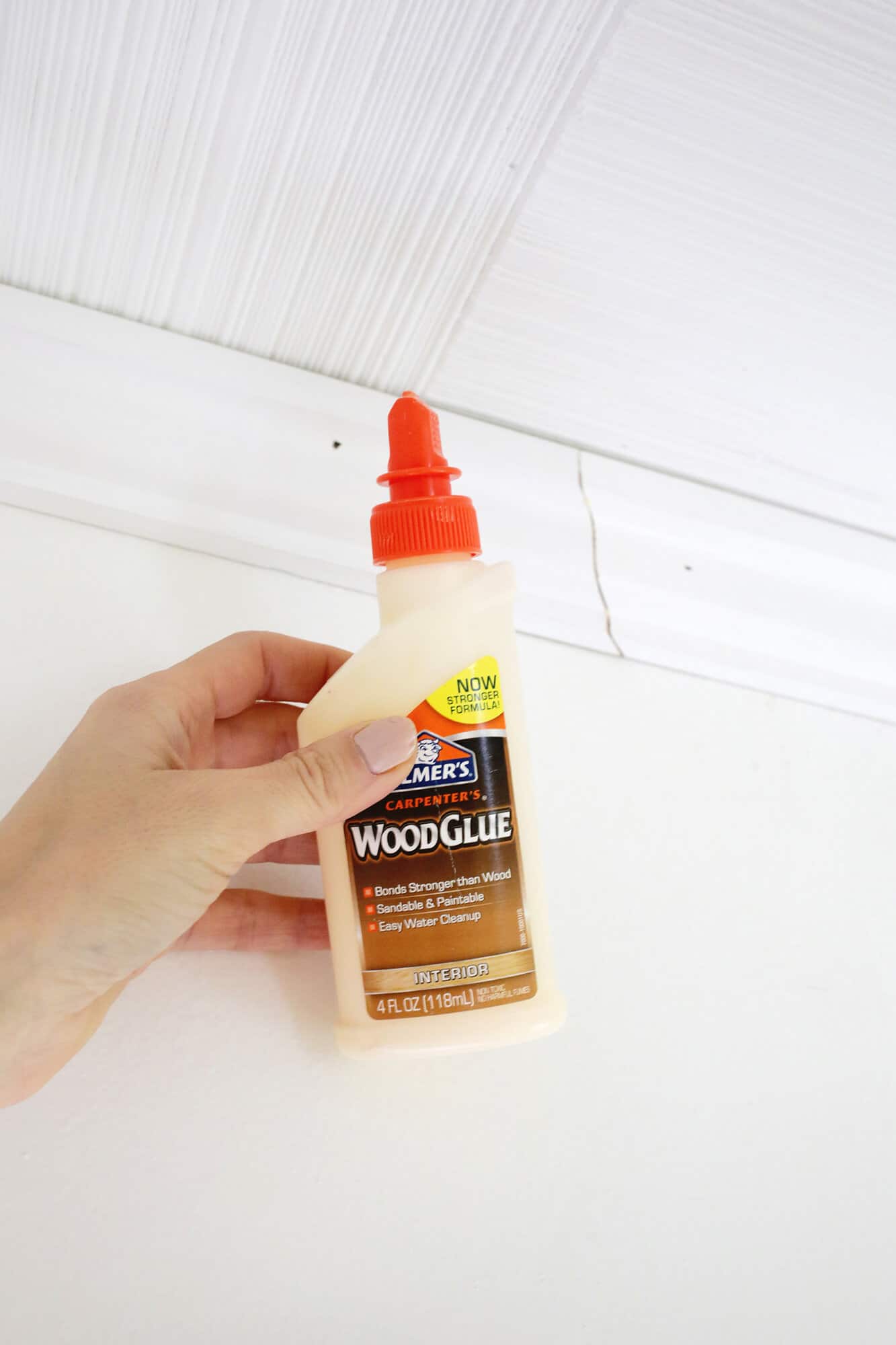
You’ll hide the seam better by cutting both ends at a 45° angle to join them together, so use your miter saw to cut the mirroring angles on each end first, add some wood glue on each angle, and then press them together, wiping off any excess glue that squeezes out when you join them.
Of course, if one side of your board is joining up with another like this to continue a line, and the other ends up going all the way to a corner, you’ll want to have both sides cut to the right length and angle before gluing the ends together and attaching the board to the ceiling.
You can’t cut the other end of a board once it’s attached to the wall so on every board both ends will need to be already cut to size with the appropriate angles before attaching to the wall, so you always have to be thinking one step ahead.
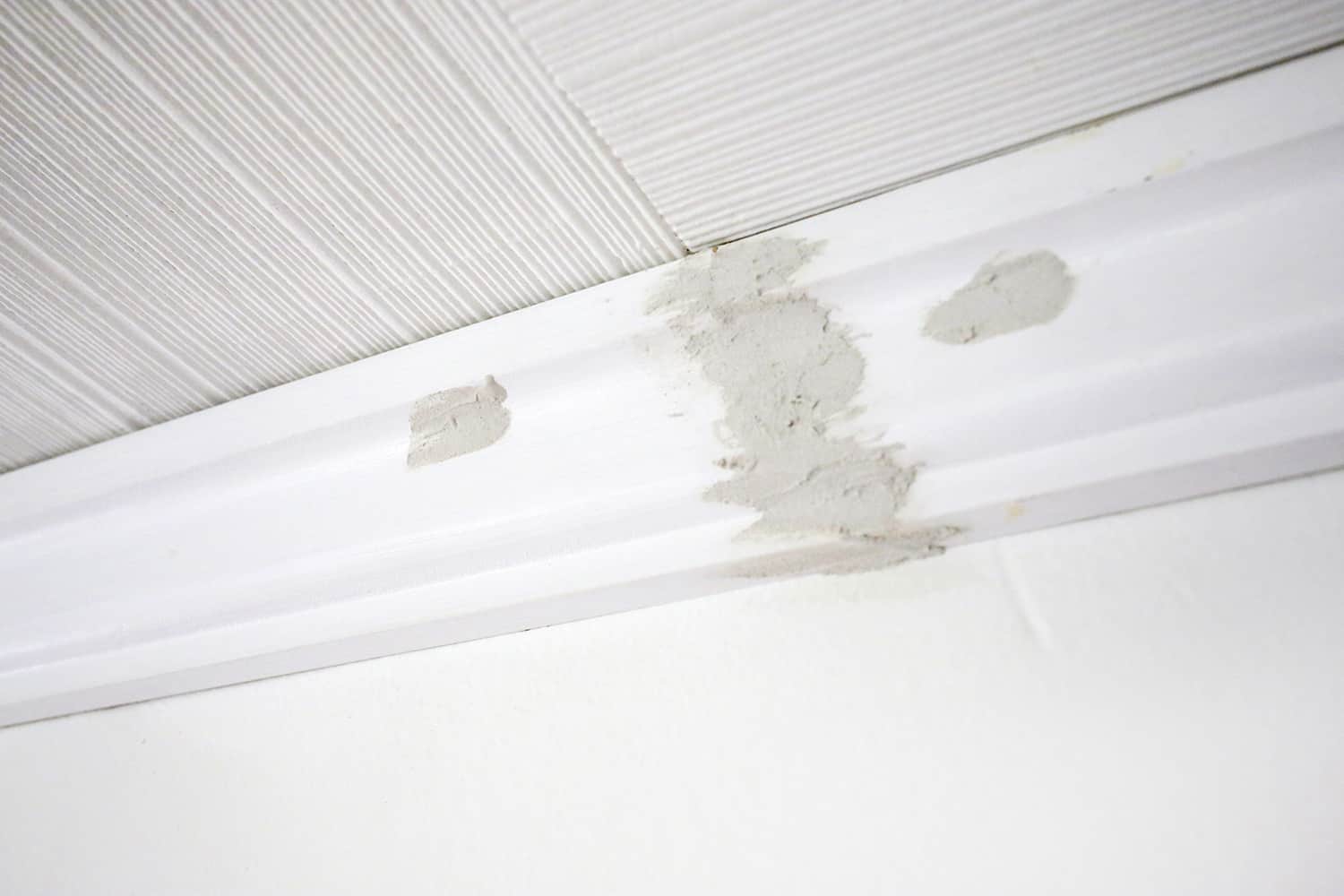
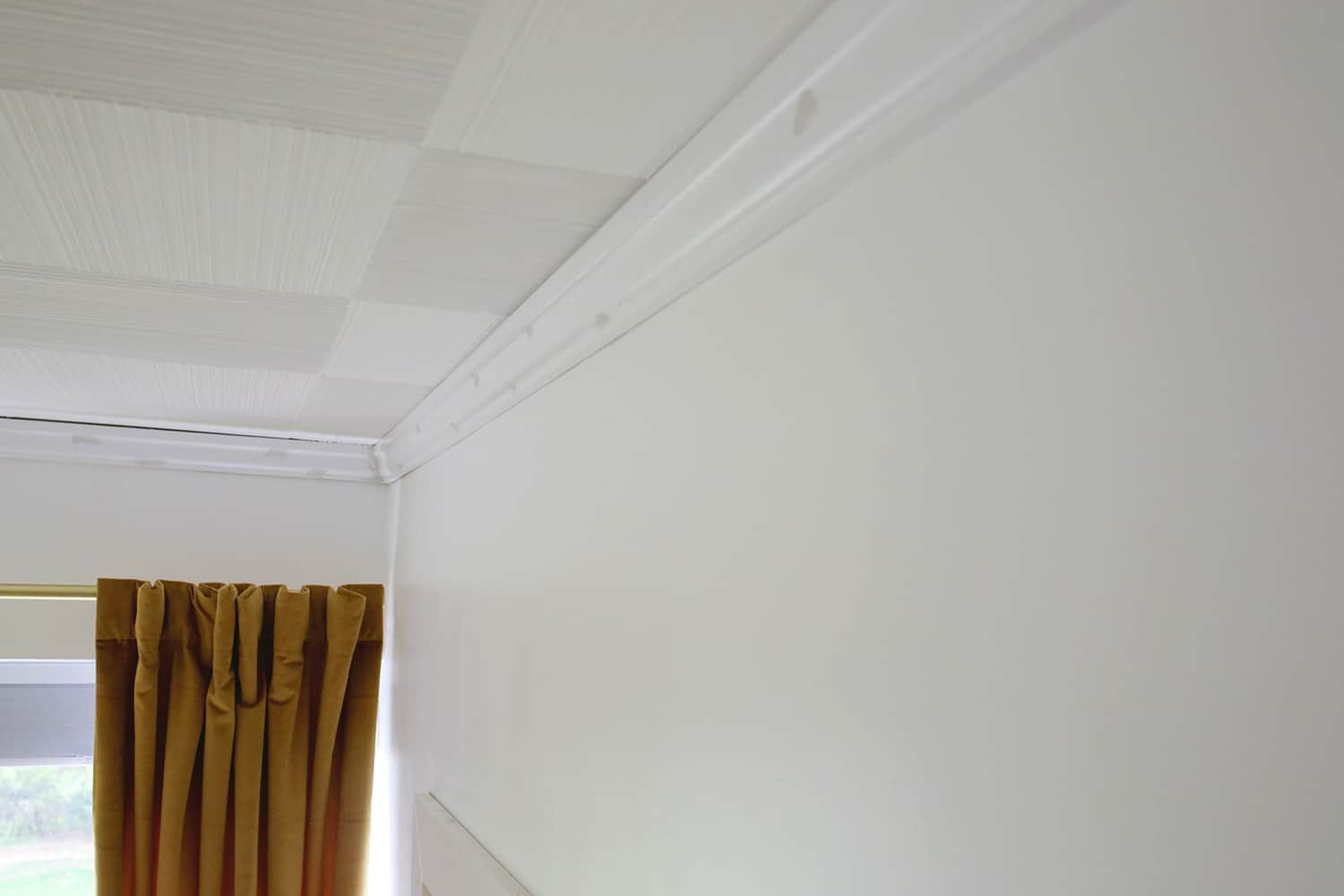

Sand it down smooth when dry and caulk the gap between the wall/trim and ceiling/trim to make it all look seamless (I like this one because it’s easy water clean up and it dries fast). Add a coat of semi-gloss paint and your crown molding project is complete!
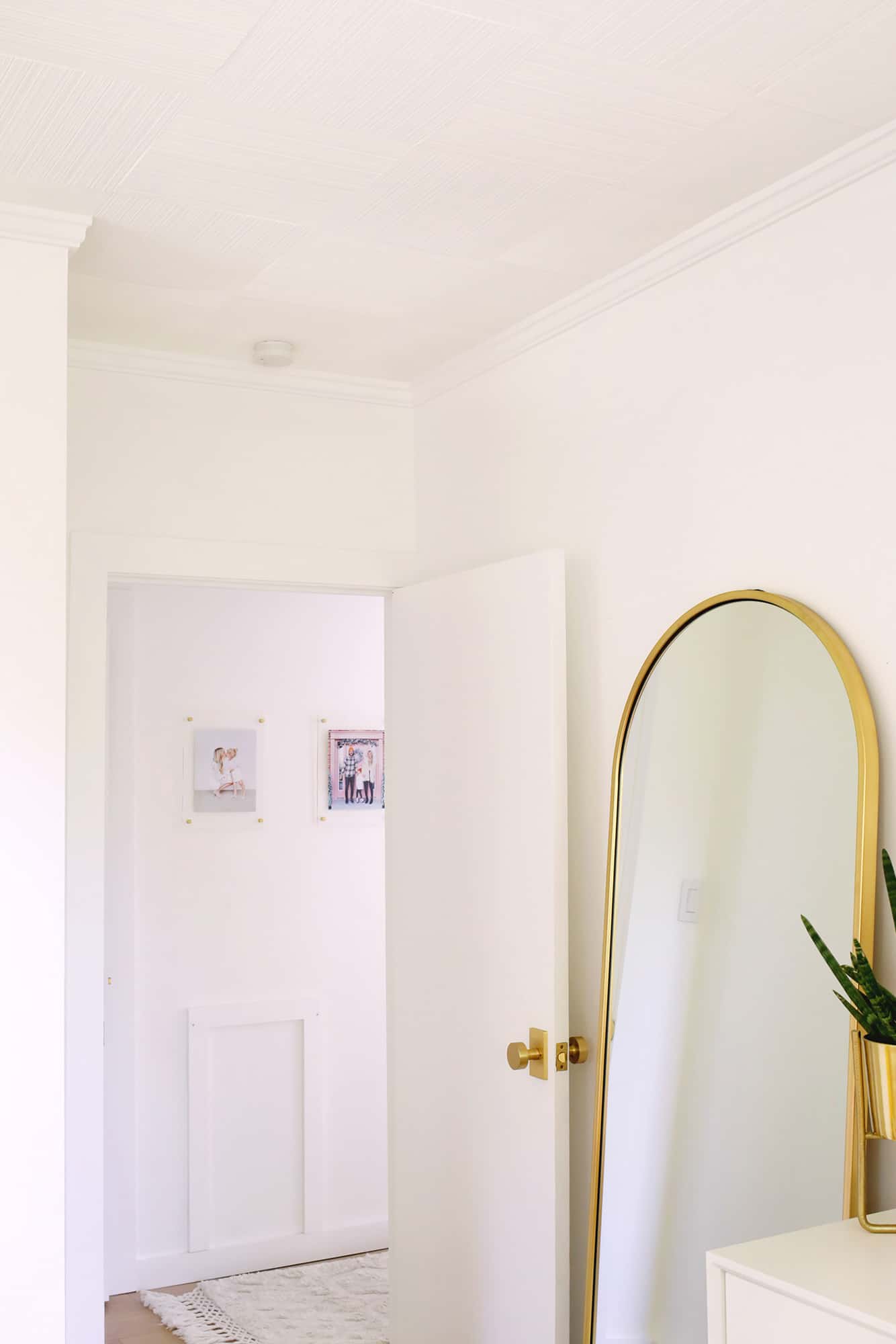
Of course, if you wanted something that was a statement piece (which I did not), then you would get something bigger/fancier/bolder looking or even paint it another color so it would stand out but the rest of the principles would still apply.
I’m SO happy to see that huge gap gone and it really does add a touch of class to the room in all the best ways. Three cheers for learning something new and doing it yourself! xo. Laura





